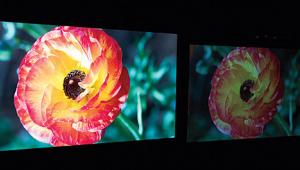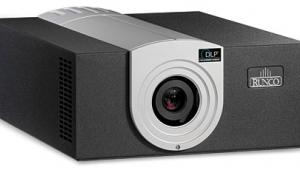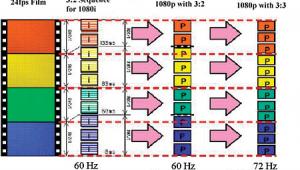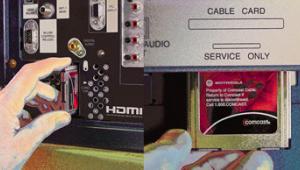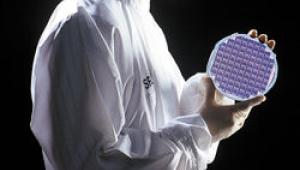An Eye for Color: Physics & Physiology
This two-part article first appeared in SGHT's Summer 1997 and February 1998 issues, so we thought it was about time to revisit the entire subject of color and vision as they pertain to video displays. Of course, the physics and physiology of light and sight haven't changed in the last six and a half years—human evolution occurs much more slowly than that, and the laws of physics are more or less eternal—but the technology that produces video images has changed dramatically in that brief time.
As a result, Part 1 is much the same as it was back then, with a few minor tweaks for clarity's sake. Naturally, we assume that longtime readers have kept all their back issues, but they may be buried in the garage and not readily accessible. Also, we thought it was important to bring newer readers up to speed with this information before publishing a completely updated Part 2, which will describe how modern video-display technologies—including DLP, LCD, LCoS, and plasma, as well as CRT—reproduce color images. But for now, it wouldn't hurt to bone up on the basics, so let's see what we can see.
Sight, sound, smell, taste, touch—the senses are our only windows on the world. Ultimately, we know nothing but what is revealed through our senses, which means that reality itself is a subjective phenomenon.
In home theaters, sight and sound are the most important senses (unless you count the smell of popcorn, the feel of a leather love seat, or the taste of a good cabernet). However, I suspect that most home-theater owners have a better understanding of sound than of sight. Over the years, various enthusiast magazines have published articles on the physics and physiology of sound and hearing in order to lay the groundwork for an in-depth understanding of audio-reproduction equipment. However, the scientific foundations of sight and video reproduction have been largely ignored.
This is perfectly understandable; in many ways, sound is simpler than sight. For example, video requires much more bandwidth than audio, which means that our visual system must process much more information than our auditory system. In addition, many of the terms used to describe the experience of sight and color reproduction are unclear and difficult to understand.
This article presents the underlying knowledge necessary for understanding how video equipment works. First, we'll examine the basic physics of light, followed by the physiology of the human visual system. Then, we'll tackle the elusive concept of color temperature and the process of combining a few colored light sources to reproduce any color. Along the way, you'll become familiar with many of the terms and standards used in SGHT reviews, such as lumens, footlamberts, and the CIE chromaticity diagram.
If you've read any articles about the basics of sound and hearing, you know that a bit of math and physics is involved. The same is true for light and color, but don't worry; I'll cover these concepts as simply and painlessly as possible. If you begin to wonder how the information presented here relates to video reproduction, rest assured that it does. I'll apply it to more practical concerns—the operation, calibration, and evaluation of video displays—in the next installment.
Physics
The physics of light and color is not difficult to understand, but it does require some background knowledge. If you're unfamiliar with the concepts of frequency, wavelength, and amplitude in wave phenomena such as sound and light, take a look at the sidebar, "Back to Basics," which should bring you up to speed for the purposes of this article.
Visible light is one form of electromagnetic radiation, which consists of tiny packets of energy called photons that can exhibit a wide range of frequencies, wavelengths, and amplitudes. Visible light inhabits a small frequency range within the entire electromagnetic spectrum (see Fig.1). Other parts of the spectrum include infrared (heat), ultraviolet, radio and television signals, microwave, X rays, and gamma rays.
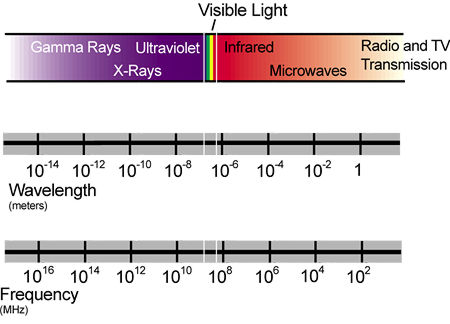
Fig.1: Visible light is only a small portion of the entire electromagnetic spectrum.
The frequency range of visible light is 3.9x108 to 7.5x108MHz. The speed of light is roughly 186,000 miles/second or 300,000 kilometers/ second, so these frequencies correspond to wavelengths of 770 nanometers (nm: billionths of a meter) to 400nm. (In practice, this range is given in reverse order, from 400nm to 770nm.) By comparison, FM radio frequencies are in the 100MHz range, corresponding to wavelengths in the 3m range, while X rays are in the 1012MHz range, corresponding to wavelengths in the 0.1nm range.
Light wavelengths are sometimes expressed in microns (µ or µm: millionths of a meter) or angstroms (Å) after Swedish physicist Anders Jonas Ångstrom (1814–1874), who first attempted to measure the wavelengths of light in metric units. One angstrom is one ten-billionth of a meter, which is approximately the diameter of a hydrogen atom. Using angstroms, visible light wavelengths range from 4000Å to 7700Å; in microns, this range is 0.40µm to 0.77µm. However, nanometers are more commonly used today.
Measuring and expressing the amplitude or intensity of light in a meaningful way is more complicated than expressing frequency or wavelength. There are many different units of measurement in common use today, which leads to some confusion.
The intensity of any electromagnetic radiation (including light) depends on the radiant flux, which is the amount of energy radiating from a source per second. This is equivalent to the power radiating from the source, which is measured in units of watts (W) after James Watt (1736–1819), a Scottish engineer and inventor who played an important part in the development of the steam engine as a practical power source. For example, 1W = 0.239 calories per second.
In the case of visible light, radiant flux is called luminous flux, and the unit of measurement is called the lumen, which is basically a unit of power. However, the measurement of luminous flux is adjusted, or weighted, to compensate for the uneven response of the human eye to different wavelengths. This is similar to A or C weighting the decibel scale of sound intensity, which compensates for the ear's uneven frequency response.
By definition, 1W of radiant flux at a wavelength of 555nm is equivalent to a luminous flux of 683 lumens. This wavelength was selected as a reference because of its importance to our visual system (which I'll get to shortly).
The intensity of visible light is called luminous intensity. This was first expressed in units of candlepower or candles. As you might imagine, the unit of candlepower was based on the light output of a "standardized" candle. The modern unit of luminous intensity is the candela (cd). By definition, one candela is the intensity of a point source that emits light at a wavelength of 555nm with a total radiant flux of 0.0184W or 12.5672 lumens.
For video applications, it's important to consider the luminous intensity radiating (or reflecting) from a surface, such as a television screen, rather than from a point. This is called luminance, which measures luminous intensity per unit area. The two most common units of luminance are the nit and the footlambert (fL), named after Johann Heinrich Lambert (1728–1777), a German mathematician who performed some of the earliest research on measuring light intensity. By definition,
1 nit = 1cd/m²
1fL = 1/p cd/ft²
Another important measurement is the luminous flux incident on a surface, such as a projection screen. This is called illuminance, which is measured in terms of luminous flux per unit area. The two primary units of measurement are the lux and footcandle (fc). By definition,
1 lux = 1 lumen/m²
1fc = 1 lumen/ft²
You've probably seen or heard the term ANSI lumens used to indicate the light output of a video projector. This measurement standard was developed by the American National Standards Institute to level the playing field for projector manufacturers, who up to then had been using different measurement techniques to achieve the highest possible readings. The process of measuring ANSI lumens is an attempt to provide consumers with a reliable, consistent basis for comparing the light output from different projectors.
- Log in or register to post comments


